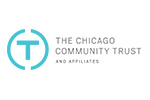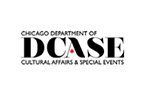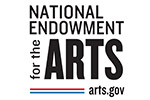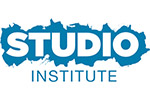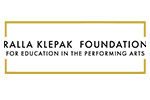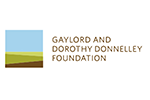Taraknath Das: Correspondence and Writings from the Student Days
INDIAN FREEDOM FIGHTERS IN THE UNITED STATES
Taraknath Das was a key figure in the overseas struggle for India’s independence. Fleeing India to escape arrest by the British authorities for his seditious activities, the twenty-two-year-old Das arrived in the United States in 1906. By 1907 he had already launched organizations of Indian students and laborers on the West Coast. For Indians on the North American continent in the early 1900’s, the struggle for independence for India was inextricably woven in with their fight against discrimination in America. They believed they were being denied rights because they were not a free people. And Taraknath Das, ardent patriot, champion of liberty and equal rights, worked elentlessly on their behalf, teaching English to the laborers, coaching them as they stood in line for immigration interviews, publishing guidebooks for the students, writing countless letters and addressing public meetings, driven by an impassioned zeal to free his motherland from British rule and to improve the lot of his fellow countrymen in their new homeland.
In his quest to mobilize resources for Indian independence he journeyed through four continents with British uthorities in hot pursuit. The American government complied with British requests and placed Das under surveillance.
These selected letters and writings by, to and about Taraknath Das offer insights into aspects of his life as the student who would later become the elder statesman among Indians in America.
“It has rather surprised me that the white cadets did not object to the presence of these {Hindoos} in the Corps…”
“The British government is keeping careful watch upon these people and the Chief of Staff would like to give them as much information as we can…”
The extent of cooperation between American and British authorities as well as racist attitudes are apparent in the declassified 1909 correspondence regarding Das from the records of the War Department General and Special Staff between Brigadier General W. W. Wotherspoon and 1st lieutenant Leslie Chapman of Norwich University’s Military College in Vermont.
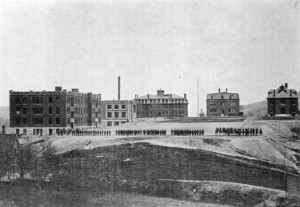
Norwich University’s Military College (left, in 1909 photo) was the oldest military college in the United States. The Norwich curriculum was developed by the War Department in Washington D.C. Das, and later, ten other “Hindoos” had enrolled with a view to gaining military training to overthrow the British.
“The educational system of Indian universities…seemed repulsive to me.”
Discrepancies in chronology in the typewritten account of his life dated 1908 from Norwich University archives invite further research. But it remains a dispassionate summary of the extraordinary achievements leading to his student days at Norwich.
According to academic records, Das joined Norwich in September, 1908. He was a good student, a fierce debater on the college team, an impassioned lecturer and also a prodigious writer who penned articles for a wide array of publications in his efforts to broadcast the call for Indian independence.
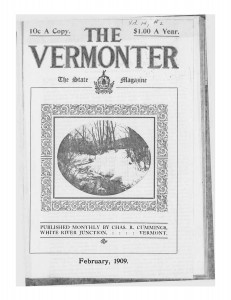
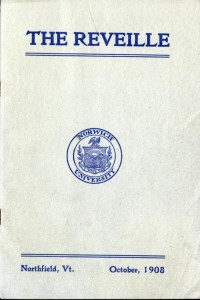
The October 1908 article he wrote for the student magazine, The Reveille, begins with philosophical musings and ends with a rousing exhortation to end the injustices perpetrated on India by the British.
Das also contributed to magazines of general interest, establishing a reputation for himself as a versatile and prolific writer.
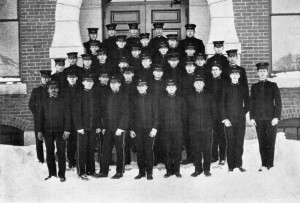
Das’ days as a Norwich University cadet (front row, left) were shortlived. He was advised to leave in 1909 after being warned, without effect, to stop his anti-British agitations.
“I think it is not necessary to give my address to anybody.”
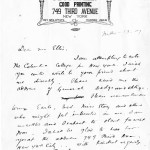 Concerns of students and staff in the early 1900’s were not very different from those of their present-day counterparts, as subsequent correspondence between Das and college historian William Arba Ellis during 1909 and the letters to Professor Herbert Rufus Roberts make apparent.
Concerns of students and staff in the early 1900’s were not very different from those of their present-day counterparts, as subsequent correspondence between Das and college historian William Arba Ellis during 1909 and the letters to Professor Herbert Rufus Roberts make apparent.
Das’ letters reveal his considerable networking skills as he tries for admission in another university, scours possibilities for financial assistance and seeks recommendations. Ellis, meanwhile, is concerned about diminishing numbers of new recruits for Norwich. Ellis’ work on the history of Norwich University and her students was a frequent topic in their correspondence, with Das eager to make sure he was accurately represented, while Ellis bemoaned the slow pace of his printers, and sought help in selling the book.
The letters and Roberts’ notes on Das reveal a great deal about the range and extent of Das’ activities and his uncertainty about his future plans.
“I am awfully busy,” he writes to Professor Roberts in his letter of March 18, 1910, recounting his activities both academic and extra-curricular. His March 22, 1910 letter seeking recommendations from the professor and also from University President Spooner asks that comments be on his performance as a “student,” presumably an indication that his revolutionary activities were best left unmentioned.
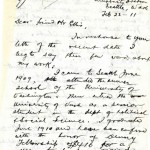
The exchange of letters beginning Feb 22, 1911, reveal Das struggling with the perennial student quests for financial assistance and a clear direction for the future. He provides historian Ellis with an account of his work:
Apart from being active and serving as president of university organizations, he was a vocal member of many civic organizations in Seattle, Washington, advocating for women’s suffrage, championing the establishment of a free hospital, and establishing an organization to promote education in India.
“If I can become a [U.S.] citizen I may take a Civil Service Examination and go to Philipine Island as a teacher.”
On April 18, 1912 he admits to being “financially embarrassed” and therefore currently unable to buy the historian’s publication.
“Today I have been admitted as a citizen of the United States.”
On June 19, 1914 Das is granted U.S. citizenship and writes to Professor Roberts informing him of this milestone on the letterhead of The Hindusthan Association of America that he established to guide Indian students in the U.S. (His citizenship was revoked following the 1923 U.S. Supreme Court decision that persons “not commonly perceived as white” were ineligible for U.S. citizenship.)
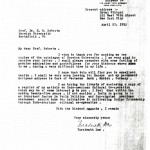 Das had evolved into a builder of coalitions by the 1930’s, a believer in education rather than violence as the key to promoting independence for India. His April 22, 1932 letter to Professor Roberts predicts that India will be an important presence in world politics and urges American statesmen to cultivate Indo-American cultural cooperation.
Das had evolved into a builder of coalitions by the 1930’s, a believer in education rather than violence as the key to promoting independence for India. His April 22, 1932 letter to Professor Roberts predicts that India will be an important presence in world politics and urges American statesmen to cultivate Indo-American cultural cooperation.
His article “Indo-American Cultural Cooperation” appeared in the Spring 1932 issue of India.
By 1946 Das had become a respected academic, teaching at Columbia University and at New York University, a sought-after speaker at international conferences who met with high government officials and statesmen. The partition of India and Nehru’s tilt toward the Soviet bloc caused him great distress, and his visits to the land of his birth were not joyous occasions. However, he continued to engage in correspondence with Indian leaders and influential figures, voicing concerns and opinions about the direction his beloved motherland was taking. In January of 1948 he established a foundation now housed at Columbia University which funds lectures by outstanding Asian educational, government and spiritual figures, and contributes to international education programs.
He died on December 21, 1958.
Read more:
- The Vermont Education of Taraknath Das: An Episode in British-American-Indian Relations by Ronald Spector, Vermont History, vol 48, no 2, Spring 1980
- Taraknath Das, Life and Letters of a Revolutionary in Exile by Tapan K. Mukherjee
- Books and articles by Taraknath Das
[portfolio_slideshow]
Images provided courtesy of Norwich University Archives, Kreitzberg Library, Northfield, VT.
The National Indo-American Museum gratefully acknowledges the assistance of
Gail Wiese, MLIS,
Assistant Archivist
Norwich University Archives and Special Collections
